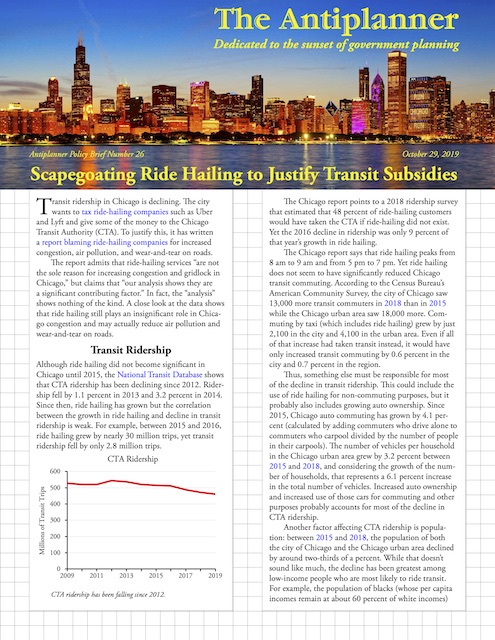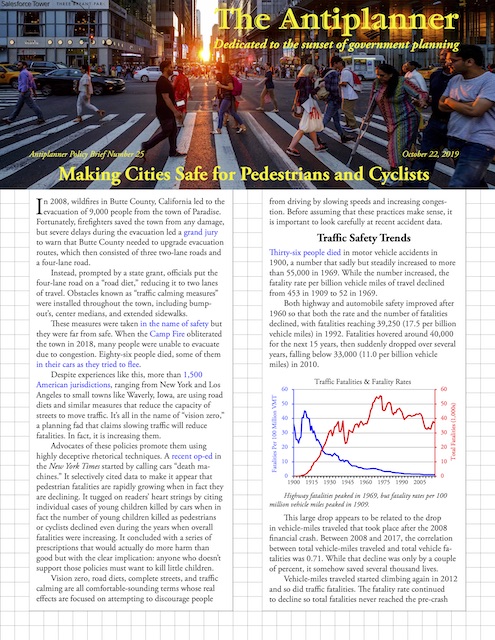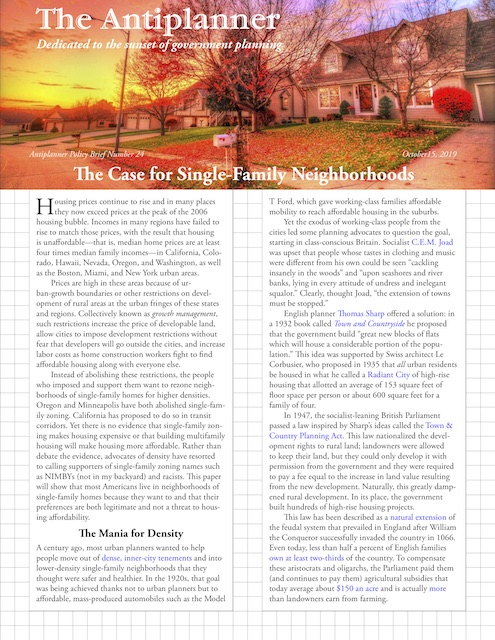Transit ridership in Chicago is declining. The city wants to tax ride-hailing companies such as Uber and Lyft and give some of the money to the Chicago Transit Authority (CTA). To justify this, it has written a report blaming ride-hailing companies for increased congestion, air pollution, and wear-and-tear on roads.
 Click image to download a three-page PDF of this policy brief.
Click image to download a three-page PDF of this policy brief.
The report admits that ride-hailing services “are not the sole reason for increasing congestion and gridlock in Chicago,” but claims that “our analysis shows they are a significant contributing factor.” In fact, the “analysis” shows nothing of the kind. A close look at the data shows that ride hailing still plays an insignificant role in Chicago congestion and may actually reduce air pollution and wear-and-tear on roads. Continue reading










